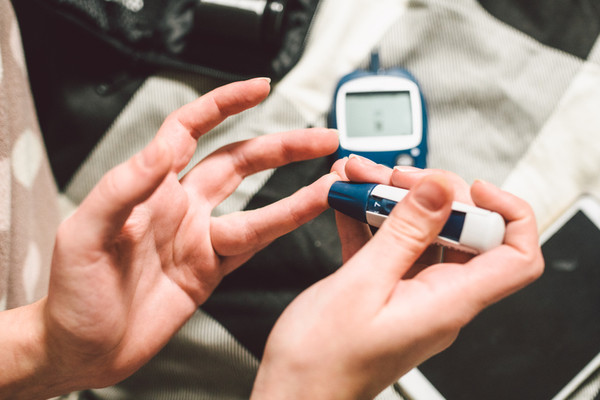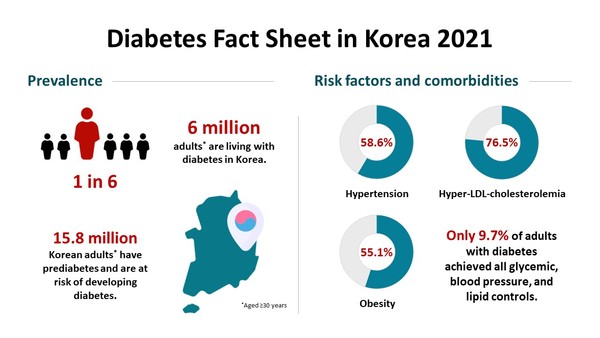The number of diabetes patients reportedly exceeded 6 million in 2020. Considering the pre-diabetic population amounts to about 15.83 million, more than 20 million Koreans suffer from diabetes or the risk of diabetes, according to the Korea Diabetes Association (KDA).
On the other hand, only 9.7 percent of diabetics are receiving integrated management, indicating that it is urgent to come up with countermeasures, the association said.

According to the Diabetes Face Sheet in Korea 2021 released by KDA, the number of diabetes patients 30 and older totaled about 6 million in 2020.
2012, the KDA predicted the number of diabetes patients would reach 5.91 million in 2050. Accordingly, the 2020 figure exceeded the prediction 30 years earlier. Also, considering that there were 3.12 million diabetes patients in Korea in 2010, the number of diabetics nearly doubled over the past decade.
Moreover, the share of older adults 65 and older accounted for 39.2 percent of the total diabetes patients in 2020, and the share rises even higher to 51.2 percent among women 65 and older, making it increasingly important to manage elderly diabetics, it said.
In parallel with the rapid increase in diabetes prevalence, the burdens of its treatment expenses are also getting heavier.

According to statistics at the Korea Disease Control and Prevention Agency (KDCA), the medical expenses for diabetes jumped by more than 60 percent over five years, from about 1.8 trillion won ($1.3 billion) in 2015 to 2.9 trillion won in 2020.
Despite the aggravating diabetes situation, its management turned out to be a “failing grade.”
Because diabetes is highly likely to be accompanied by other diseases, such as high blood pressure and dyslipidemia, and has a high risk of complications, it is necessary to manage glycated hemoglobin, blood pressure, and cholesterol at optimal levels. However, according to the association, only 9.7 percent of diabetes patients received integrated management in 2020.
Worse yet, the share of patients who managed to control the glycated hemoglobin level at the target range of lower than 6.5 percent stood at only 24.5 percent of the total patients, showing why it is urgent to raise public awareness of diabetes and work out positive countermeasures.
“The prevalence of diabetes is increasing far faster than expected,” KDA Chairman Won Kyu-jang said. “Considering Korea will soon enter a superaged society, the trend will even accelerate.”
Noting that diabetes causes other chronic diseases, including high blood pressure and dyslipidemia, and complications, such as cardiovascular and kidney diseases, Won emphasized it is important to manage it comprehensively and positively from the initial stage.
He also stressed that diabetes is one of the essential diseases that should be managed on a national, not individual, level, adding that the number of patients exceeding prediction 30 years earlier than expected shows Korea has had absolutely no time to prevent a “diabetes crisis.”
“We all must be aware of the situation as a grave national crisis and not postpone making efforts to solve the problem any longer,” he said. “Government officials and private experts should gather together and work out countermeasures to prevent the diabetes crisis.”

